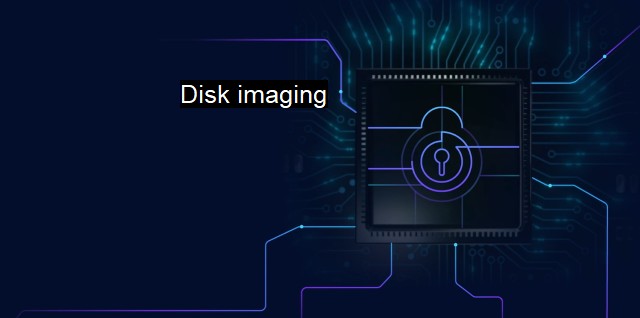What is Disk imaging?
Preserving and Protecting: Understanding the Critical Role of Disk Imaging in Cybersecurity
Disk imaging is an essential tech term, often employed in conversations concerning cybersecurity and antivirus solutions. Considered a comprehensive deterrent to subversion and data loss, disk imaging in essence constitutes the precise replication of a computer's hard drive, including both the tangible documents stored on the drive and surplus data, such as boot information and applications.To comprehend the value of disk imaging, it's necessary to garb an understanding of the nature of modern cyber threats. Individuals, corporates, and governments are increasingly being the target of digital assaults. These can come from viruses, ransomware, or even sophisticated hacking attempts aimed at gaining control of systems for data theft, disruption, or cyber espionage. With such a barrage of threats prevalent online, the importance of preventative measures, such as antiviruses as well as a comprehensive rescue and restoration plan for criticial data and systems, cannot be overemphasised.
This is where disk imaging comes into play. A disk image copies a computer's complete file system, including each bit of programming code within the hard disk. This not only encompasses upcoming folders and files but other aspects too that may not be particularly discernible. For instance, the system settings, intricate associations between files and folders, and a vast array of other metadata remain part and parcel of a disk image.
From the scope of cyberdefence, disk imaging provides an incisive antivirus potential. The goal of numerous cyber incursions is to either gain unauthorized access to data by breaching installation settings and associations or deleting or altering sensitive information, to disrupt operations. Having a precise disk image of the system can render such incursions futile. If such an event occurs, the affected organization, individual or government entity can nullify the damage by reverting to the complete backup, enabling them to restore their systems to how they existed prior to the infringement.
Maintaining a comprehensive disk image allows for rapid and consistent restoration of systems in the instance of system failure, advantageous in reducing downtime. This point is ever crucial as any significant disruption can lead to considerable financial loss and damage to reputation.
Professional antivirus solutions often include disk imaging among their services. some services permit regularly scheduled imaging, allowing for near-constant protection. A logical defense plan might then be to continually scan for threats using an antivirus software and store disk images occasionally to ward off any worst-case scenario.
It's worth mentioning that disk images can take up a lot of storage space, due to it being a complete system duplicate. Organisations dealing with voluminous amounts of data may need to calculate and balance storage needs for efficient operations.
Disk imaging must not replace other necessary defenses in a comprehensive cybersecurity strategy. Applying layers of protection, such as firewalls, intrusion detection systems, strong password policies, employee training, and regular software updates, will collectively create a secure environment.
As an element of cybersecurity strategy and antivirus protection, Disk Imaging represents an earnest attempt to solidify unity between all defence mechanics. Transferring this image into another drive can serve for an instant system recovery and cleaning if the system becomes severely infected by a new strain of a virus or a potent cyber attack — a kind of digital insurance policy that reflects our increasing stance against cyber threats.

Disk imaging FAQs
What is disk imaging in the context of cybersecurity and antivirus?
Disk imaging refers to creating an exact copy or image of the contents of a hard disk, including the operating system, programs, and data. In the context of cybersecurity and antivirus, disk imaging is a useful tool for forensic analysis, data recovery, and malware detection and removal.Why is disk imaging important for cybersecurity and antivirus?
Disk imaging is important for cybersecurity and antivirus because it allows analysts and security professionals to examine the contents of a hard disk at a specific point in time, which can be useful for identifying and isolating malware, investigating security incidents, and recovering lost data.How is disk imaging different from regular backup?
Disk imaging is different from regular backup because it creates a complete copy of the contents of a hard disk, while backup typically only copies selected files and directories. Disk imaging is also more useful for forensic analysis, data recovery, and malware detection because it captures all of the data and settings on a hard disk, including the operating system and programs.What are some tools and techniques for disk imaging in cybersecurity and antivirus?
There are several tools and techniques for disk imaging in cybersecurity and antivirus, including commercial and open-source software programs such as FTK Imager, Encase, dd, and Clonezilla. Best practices for disk imaging include using write blockers to prevent data from being altered or corrupted during the imaging process, and creating multiple copies of the image for redundancy and verification purposes.| | A | | | B | | | C | | | D | | | E | | | F | | | G | | | H | | | I | | | J | | | K | | | L | | | M | |
| | N | | | O | | | P | | | Q | | | R | | | S | | | T | | | U | | | V | | | W | | | X | | | Y | | | Z | |
| | 1 | | | 2 | | | 3 | | | 4 | | | 7 | | | 8 | | |||||||